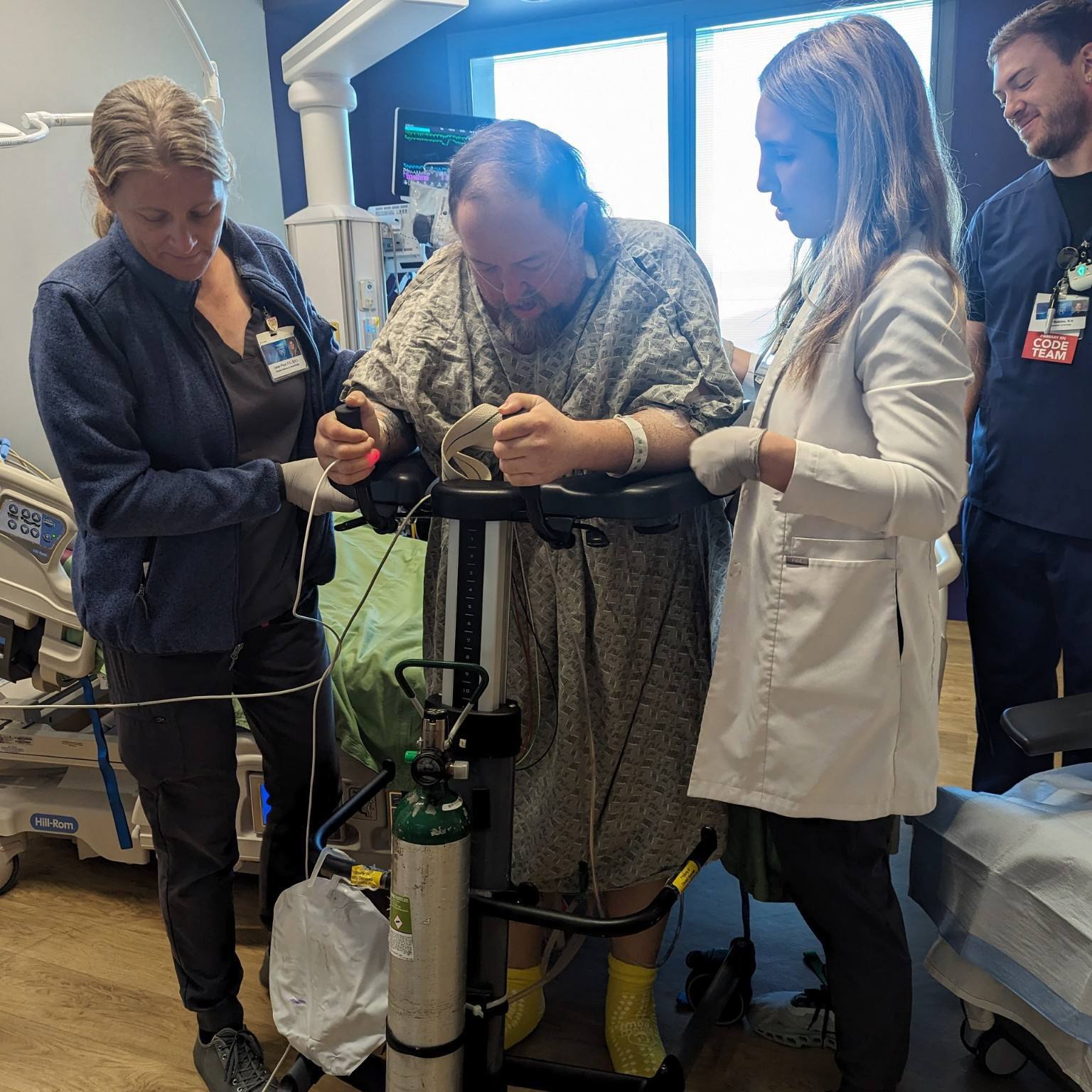
As Rachel Willenberg, and her husband Seth, look at their two healthy daughters today, they are reminded of the specialized obstetrics and cardiovascular care at Mayo Clinic that made having a family possible.
For years before her first visit to Mayo Clinic, Rachel endured baffling symptoms of breathlessness, bruising on her chest, and swelling in her face and upper arms. An eventual diagnosis of a rare condition known as fibrosing mediastinitis (FM) left her confused about her future and nearly dashed all hope of having a family.
A saga of symptoms
Rachel began to experience concerning symptoms at age 19 when she awoke one morning to see an unfamiliar face looking back from her mirror. "My entire face was swollen and looked as if I was having an allergic reaction to something," she says. Soon after, she developed what looked like bruises on her chest.
While in Army Reserve Officers' Training Corps (ROTC) training, she found that the rigorous daily exercise regimen took an enormous toll on her. Rachel gained weight and again developed swelling in her face and upper arms. While stationed in Hawaii, her symptoms worsened.
A CT scan of Rachel's chest showed that her superior vena cava (SVC) was entirely closed and that fibrous tissues encapsulated the area around this large vein that returns blood to the right atrium of the heart from the upper half of the body. On Dec. 9, 1998, Rachel was diagnosed with FM, a rare disorder that builds up scar tissue in the space between the lungs, which contains the heart, esophagus and other structures.
The course of Rachel's illness has reflected this relentless process. She underwent several invasive procedures to re-open her SVC, including placement of a stent. In 2002, while she was working as a nurse at an Army medical center in Texas, her health nose-dived. Tests revealed that her right pulmonary artery was severely narrowed, and she had developed blood clots.
"I was being monitored and given blood thinners," she says, 'but there was no one at the Army medical center with the expertise to care for me." Rachel's pulmonologist called major medical centers describing Rachel's deteriorating condition and requesting a response from anyone who would treat her. Mayo Clinic responded.
First trip to Mayo by air
Rachel was transported by the Air Force to Mayo Clinic in Rochester, Minn., where she was cared for by Mayo Clinic pediatric interventional cardiologist Allison Cabalka, M.D.
Without a known cause for FM, treatment addresses symptoms, not the underlying disease. Dr. Cabalka continued blood thinners and performed a cardiac catheterization procedure to place a stent in Rachel's narrowed right pulmonary artery. A year later, Rachel returned to Mayo Clinic for three more stents. Dr. Cabalka overlapped the stents in the SVC, bringing Rachel more permanent relief from symptoms and for the first time in a long time, hope for her future.
In April 2003, Rachel married, and in September she was medically discharged from the military. She and Seth settled into a new life in Colombia, Mo.
Big decision: Starting a family
The Willenbergs knew they were entering uncharted territory when they decided to start a family. "We understood there would be serious risks and that specialized care would be necessary," says Rachel. "I knew from my experience that Mayo is a great medical facility and that they would care for me through pregnancy."
Planning for pregnancy involved coordination of care between Mayo Clinic physicians and an obstetrician in Missouri. "Dr. Cabalka sent Rachel to me in 2004 to discuss the risks of pregnancy," says Sabrina Phillips, M.D., a Mayo Clinic cardiologist who specialized in adult congenital heart disease. "FM could result in low blood flow to the lungs and heart, which makes low blood flow to the uterus a concern. In addition, Rachel has a blood clotting disorder, which increases her risk and requires close monitoring of blood thinners. And, there really are no documented causes of pregnancy with FM. We were in new territory."
In the next 18 months, Rachel had two miscarriages. In September 2006, she returned to Mayo for a venoplasty procedure to re-open her SVC. Still hopeful, Rachel was pregnant again by early 2007 and eager to carry a child to term. Rachel and Seth traveled to Mayo Clinic for regularly scheduled consultations with Drs. Phillips and Cabalka, and Carl Rose, M.D., a Mayo Clinic high-risk obstetrician. Between appointments, Mayo physicians stayed in contact with Rachel's obstetrician in Missouri.
A team with expertise in complex cases
"We may not have quite as many obstetrics patients as some medical centers, but we see a high volume of complex cases," says Dr. Rose. "We use a team approach to closely monitor the patient's physiological changes and anticipate how things will progress during the pregnancy."
"Another significant benefit for a patient being treated at Mayo is that we physicians can easily consult with colleagues from other disciplines who are located nearby," adds Dr. Phillips. "Proximity made it convenient for Dr. Rose and me to collaborate on Rachel's care, including when to start blood thinners and other oral medications. I also drew on the expertise of specialists in adult congenital heart disease, and talked with senior colleagues in Pulmonology medicine and Rheumatology who have experience with other FM patients. This interdisciplinary approach is critical, particularly when there are many unknowns. We combine experiences and data from other specialties to deliver the best care possible."
Rachel and her physicians agreed that the baby would be delivered in Rochester at 37 weeks. But as it is with many first-time pregnancies, circumstances did not occur as predicted. Labor came early, and by the time the Willenbergs got to the Columbia airport, Rachel's labor was too far along to travel to Rochester. A cesarean section was performed in Columbia, and the Willenbergs celebrated the arrival of their daughter, Ariana.
A temporary move: Second baby on the way!
The couple was overjoyed when Rachel became pregnant again in 2008. As the months went by leading up to her delivery, Rachel stayed in close contact with her local obstetrician, who regularly exchanged updates with Drs. Rose and Phillips.
As her delivery date approached, Rachel did what many high-risk mothers-to-be do. In the last three weeks of her pregnancy, Rachel, Seth, and her mother, moved to Rochester (temporarily) to be close to her caregivers.
"Rachel saw me regularly during those three weeks," recalls Dr. Phillips. "Dr. Rose and I agreed that at 37 weeks the baby would be delivered. Rachel was monitored closely as she was kept on heparin for her clotting disorders. When swelling in her face became a concern, an echocardiogram was ordered. She got a cohesive team approach that few centers in the country could offer."
On June 29, 2009, the Willenbergs welcomed their second daughter, Aleah, into the world.
"I know people might try to scare someone with FM into thinking that a family is impossible," says Rachel. "I've learned anything is possible. With proper medical care you can have a normal life filled with love, laughter, and children. I am so glad that I pursued my treatment at Mayo Clinic. I received both the physical and emotional support I needed to start my family."
Related Articles







